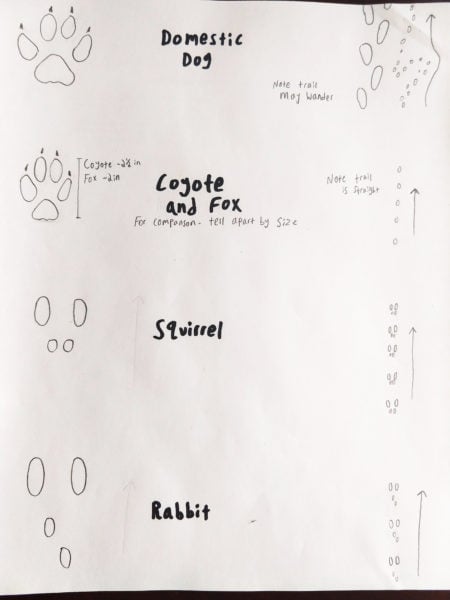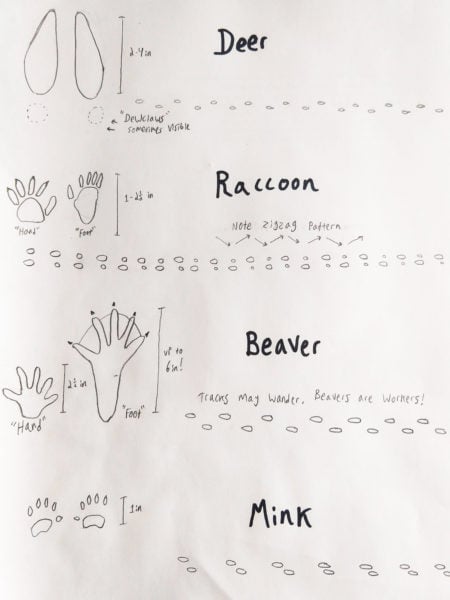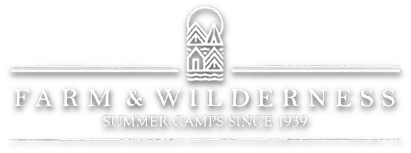Up at Flying Cloud, our program emphasizes the importance of not just living on the landscape but connecting with it. One of my favorite ways to do that when I’m at home is tracking. By tracking, we can get an idea of what animals we’re sharing our spaces with, and in what ways they make the spaces their home.
For example, in my hometown of Burlington, after a particularly warm day melted the ice around the edges of the Winooski River, I went down to a spot where I’d previously found signs of beaver activity. When I got down there, not only did I find more beaver tracks in the wet mud, but an absolute ton of freshly chewed stumps, with no sign of the trees!
So where did they go? Beavers eat only the green inner bark of the tree and need to stock up an incredible amount of wood for their food supply to last through the winter. If they’re living in a body of water that freezes over completely, they need to go a whole winter without seeing daylight.
On that unseasonably warm day, the beavers must have seized the opportunity to get some work done and ventured out on the land – gathering as much green wood as they could carry and leaving nothing behind but stumps and chew marks. While nothing earth-shaking, this small understanding brought me a little closer to building a relationship with them as neighbors.
To start to do the same in your area, try learning what some of the most common animals in your local park or wild space are. Field guides are good resources if you have one, or you can do some internet sleuthing. You’ll probably find some of the following:

-Domestic dog (surprise!)
-Squirrel
-Raccoon
-Deer
-Rabbit
Or maybe:
-Beaver (if near water)
-Opossum
-Mink (if near water)
-Fox
-Mouse

Next, go outside and find some tracks to follow. Muddy areas like riverbanks or marshes are great, but even a dirt path on a wet day can be a goldmine. If you get snow where you live, even better. Once you find some tracks, take a picture and see if you can match your tracks against ones in a field guide or on the internet (the internet is an incredible resource for tracking!). As you become familiar with these tracks, you’ll start to recognize them more and more when you go out, and you might even start noticing patterns in behavior.
Pay attention not just to the shape of the footprints, but what the trail looks like as well. For example, the prints of your dog look pretty similar to that of a coyote. But while dogs always know when their next meal is coming, coyotes need to save their energy. And so, dog tracks often loop and meander as the dog sniffs around, while coyote tracks are straight and purposeful.
There are also other signs of animal habitation to find out there. If you find something intriguing in nature but you don’t understand it, keep that mystery in your back pocket and see if you can find the answer later.
Speaking of which, if you have a great experience out in the woods, or maybe want to try and tease apart a nature mystery big or small, I’d love to hear about it. Feel free to send it my way at elliott@farmandwilderness.org.
Be well and stay connected,
Elliott




